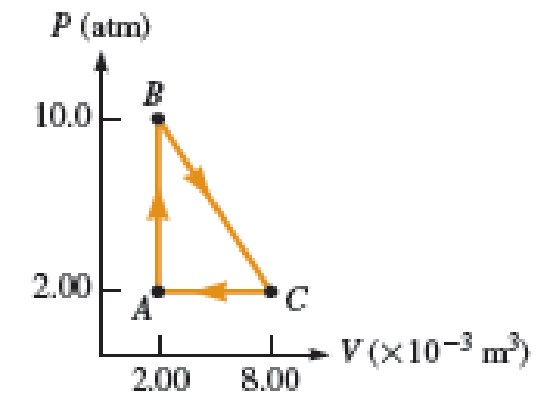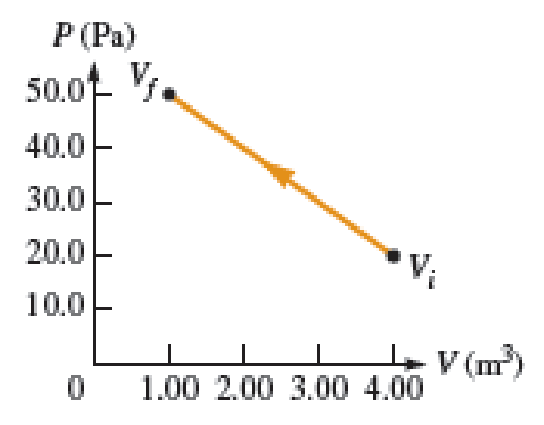
Physics for Scientists and Engineers: Foundations and Connections
1st Edition
ISBN: 9781133939146
Author: Katz, Debora M.
Publisher: Cengage Learning
expand_more
expand_more
format_list_bulleted
Textbook Question
Chapter 21, Problem 36PQ
Figure P21.36 shows a

FIGURE P21.36

FIGURE P21.37
Expert Solution & Answer
Want to see the full answer?
Check out a sample textbook solution
Students have asked these similar questions
Part A
m
2πkT
) 3/2
Calculate the integral (v) = f vƒ (v)dv. The function f(v) describing the actual distribution of molecular speeds is called the Maxwell-Boltzmann distribution,
=
ƒ(v) = 4π (· v²e-mv²/2kT
. (Hint: Make the change of variable v² =x and use the tabulated integral foxne
integer and a is a positive constant.)
Express your answer in terms of the variables T, m, and appropriate constants.
-ax dx
n!
-
an+1
where n is a positive
(v)
=
ΕΠΙ ΑΣΦ
Submit Previous Answers Request Answer
?
× Incorrect; Try Again; 4 attempts remaining
Al Study Tools
Looking for some guidance? Let's work through a few related
practice questions before you go back to the real thing.
This won't impact your score, so stop at anytime and ask for
clarification whenever you need it.
Ready to give it a try?
Start
Starter the rule of significant
Please solve this problem and give step by step explanations on each step while breaking it down please. Thank you!!
Chapter 21 Solutions
Physics for Scientists and Engineers: Foundations and Connections
Ch. 21.2 - Incorrect. Heat is not contained in Texas. The...Ch. 21.3 - In each situation listed, an objects temperature...Ch. 21.4 - Prob. 21.3CECh. 21.4 - Prob. 21.4CECh. 21.7 - Prob. 21.5CECh. 21.7 - Prob. 21.6CECh. 21.7 - Prob. 21.7CECh. 21.7 - Prob. 21.8CECh. 21.7 - Prob. 21.9CECh. 21 - Prob. 1PQ
Ch. 21 - Prob. 2PQCh. 21 - You extend an impromptu invitation to a friend for...Ch. 21 - Prob. 4PQCh. 21 - Prob. 5PQCh. 21 - Prob. 6PQCh. 21 - Prob. 7PQCh. 21 - Prob. 8PQCh. 21 - Prob. 9PQCh. 21 - Prob. 10PQCh. 21 - Prob. 11PQCh. 21 - Prob. 12PQCh. 21 - Prob. 13PQCh. 21 - Prob. 14PQCh. 21 - Prob. 15PQCh. 21 - Prob. 16PQCh. 21 - Prob. 17PQCh. 21 - Prob. 18PQCh. 21 - Prob. 19PQCh. 21 - From Table 21.1, the specific heat of milk is 3.93...Ch. 21 - Prob. 21PQCh. 21 - Prob. 22PQCh. 21 - An ideal gas is confined to a cylindrical...Ch. 21 - Prob. 24PQCh. 21 - You place frozen soup (T = 17C) in a microwave...Ch. 21 - A 25-g ice cube at 0.0C is heated. After it first...Ch. 21 - Prob. 27PQCh. 21 - Prob. 28PQCh. 21 - Prob. 29PQCh. 21 - Prob. 30PQCh. 21 - Consider the latent heat of fusion and the latent...Ch. 21 - Prob. 32PQCh. 21 - Prob. 33PQCh. 21 - A thermodynamic cycle is shown in Figure P21.34...Ch. 21 - Prob. 35PQCh. 21 - Figure P21.36 shows a cyclic thermodynamic process...Ch. 21 - Figure P21.37 shows a PV diagram for a gas that is...Ch. 21 - Prob. 38PQCh. 21 - Prob. 39PQCh. 21 - Prob. 40PQCh. 21 - Prob. 41PQCh. 21 - Prob. 42PQCh. 21 - Prob. 43PQCh. 21 - Prob. 44PQCh. 21 - Figure P21.45 shows a cyclic process ABCDA for...Ch. 21 - Prob. 46PQCh. 21 - Prob. 47PQCh. 21 - Prob. 48PQCh. 21 - Prob. 49PQCh. 21 - Prob. 50PQCh. 21 - Prob. 51PQCh. 21 - Prob. 52PQCh. 21 - Prob. 53PQCh. 21 - Prob. 54PQCh. 21 - Prob. 55PQCh. 21 - You extend an impromptu invitation to a friend for...Ch. 21 - Prob. 57PQCh. 21 - Prob. 58PQCh. 21 - A lake is covered with ice that is 2.0 cm thick....Ch. 21 - A concerned mother is dressing her child for play...Ch. 21 - Prob. 61PQCh. 21 - Prob. 62PQCh. 21 - Prob. 63PQCh. 21 - Prob. 64PQCh. 21 - Prob. 65PQCh. 21 - Prob. 66PQCh. 21 - Prob. 67PQCh. 21 - Prob. 68PQCh. 21 - Three 100.0-g ice cubes initially at 0C are added...Ch. 21 - Prob. 70PQCh. 21 - Prob. 71PQCh. 21 - Prob. 72PQCh. 21 - Prob. 73PQCh. 21 - Prob. 74PQCh. 21 - Prob. 75PQCh. 21 - Prob. 76PQCh. 21 - Prob. 77PQCh. 21 - Prob. 78PQCh. 21 - How much faster does a cup of tea cool by 1C when...Ch. 21 - The PV diagram in Figure P21.80 shows a set of...Ch. 21 - Prob. 81PQCh. 21 - Prob. 82PQCh. 21 - Prob. 83PQCh. 21 - Prob. 84PQCh. 21 - Prob. 85PQ
Knowledge Booster
Learn more about
Need a deep-dive on the concept behind this application? Look no further. Learn more about this topic, physics and related others by exploring similar questions and additional content below.Similar questions
- Car A starts from rest at t = 0 and travels along a straight road with a constant acceleration of 6 ft/s^2 until it reaches a speed of 60ft/s. Afterwards it maintains the speed. Also, when t = 0, car B located 6000 ft down the road is traveling towards A at a constant speed of 80 ft/s. Determine the distance traveled by Car A when they pass each other.Write the solution using pen and draw the graph if needed.arrow_forwardIn the given circuit the charge on the plates of 1 μF capacitor, when 100 V battery is connected to the terminals A and B, will be 2 μF A 1 µF B 3 µFarrow_forwardThe velocity of a particle moves along the x-axis and is given by the equation ds/dt = 40 - 3t^2 m/s. Calculate the acceleration at time t=2 s and t=4 s. Calculate also the total displacement at the given interval. Assume at t=0 s=5m.Write the solution using pen and draw the graph if needed.arrow_forward
- The velocity of a particle moves along the x-axis and is given by the equation ds/dt = 40 - 3t^2 m/s. Calculate the acceleration at time t=2 s and t=4 s. Calculate also the total displacement at the given interval. Assume at t=0 s=5m.Write the solution using pen and draw the graph if needed.arrow_forwardThe velocity of a particle moves along the x-axis and is given by the equation ds/dt = 40 - 3t^2 m/s. Calculate the acceleration at time t=2 s and t=4 s. Calculate also the total displacement at the given interval. Assume at t=0 s=5m.Write the solution using pen and draw the graph if needed. NOT AI PLSarrow_forwardThe velocity of a particle moves along the x-axis and is given by the equation ds/dt = 40 - 3t^2 m/s. Calculate the acceleration at time t=2 s and t=4 s. Calculate also the total displacement at the given interval. Assume at t=0 s=5m.Write the solution using pen and draw the graph if needed.arrow_forward
- The velocity of a particle moves along the x-axis and is given by the equation ds/dt = 40 - 3t^2 m/s. Calculate the acceleration at time t=2 s and t=4 s. Calculate also the total displacement at the given interval. Assume at t=0 s=5m.Write the solution using pen and draw the graph if needed.arrow_forwardPlease don't use Chatgpt will upvote and give handwritten solutionarrow_forwardNo chatgpt pls will upvote Already got wrong chatgpt answerarrow_forward
arrow_back_ios
SEE MORE QUESTIONS
arrow_forward_ios
Recommended textbooks for you
 Physics for Scientists and Engineers: Foundations...PhysicsISBN:9781133939146Author:Katz, Debora M.Publisher:Cengage Learning
Physics for Scientists and Engineers: Foundations...PhysicsISBN:9781133939146Author:Katz, Debora M.Publisher:Cengage Learning Principles of Physics: A Calculus-Based TextPhysicsISBN:9781133104261Author:Raymond A. Serway, John W. JewettPublisher:Cengage Learning
Principles of Physics: A Calculus-Based TextPhysicsISBN:9781133104261Author:Raymond A. Serway, John W. JewettPublisher:Cengage Learning Physics for Scientists and Engineers with Modern ...PhysicsISBN:9781337553292Author:Raymond A. Serway, John W. JewettPublisher:Cengage Learning
Physics for Scientists and Engineers with Modern ...PhysicsISBN:9781337553292Author:Raymond A. Serway, John W. JewettPublisher:Cengage Learning Physics for Scientists and EngineersPhysicsISBN:9781337553278Author:Raymond A. Serway, John W. JewettPublisher:Cengage Learning
Physics for Scientists and EngineersPhysicsISBN:9781337553278Author:Raymond A. Serway, John W. JewettPublisher:Cengage Learning
 College PhysicsPhysicsISBN:9781938168000Author:Paul Peter Urone, Roger HinrichsPublisher:OpenStax College
College PhysicsPhysicsISBN:9781938168000Author:Paul Peter Urone, Roger HinrichsPublisher:OpenStax College

Physics for Scientists and Engineers: Foundations...
Physics
ISBN:9781133939146
Author:Katz, Debora M.
Publisher:Cengage Learning

Principles of Physics: A Calculus-Based Text
Physics
ISBN:9781133104261
Author:Raymond A. Serway, John W. Jewett
Publisher:Cengage Learning

Physics for Scientists and Engineers with Modern ...
Physics
ISBN:9781337553292
Author:Raymond A. Serway, John W. Jewett
Publisher:Cengage Learning

Physics for Scientists and Engineers
Physics
ISBN:9781337553278
Author:Raymond A. Serway, John W. Jewett
Publisher:Cengage Learning


College Physics
Physics
ISBN:9781938168000
Author:Paul Peter Urone, Roger Hinrichs
Publisher:OpenStax College
Thermodynamics: Crash Course Physics #23; Author: Crash Course;https://www.youtube.com/watch?v=4i1MUWJoI0U;License: Standard YouTube License, CC-BY